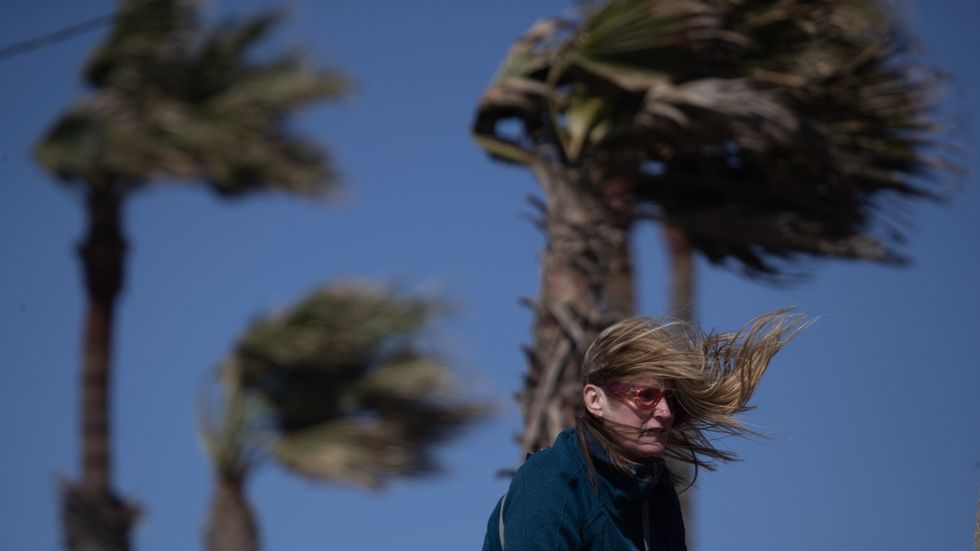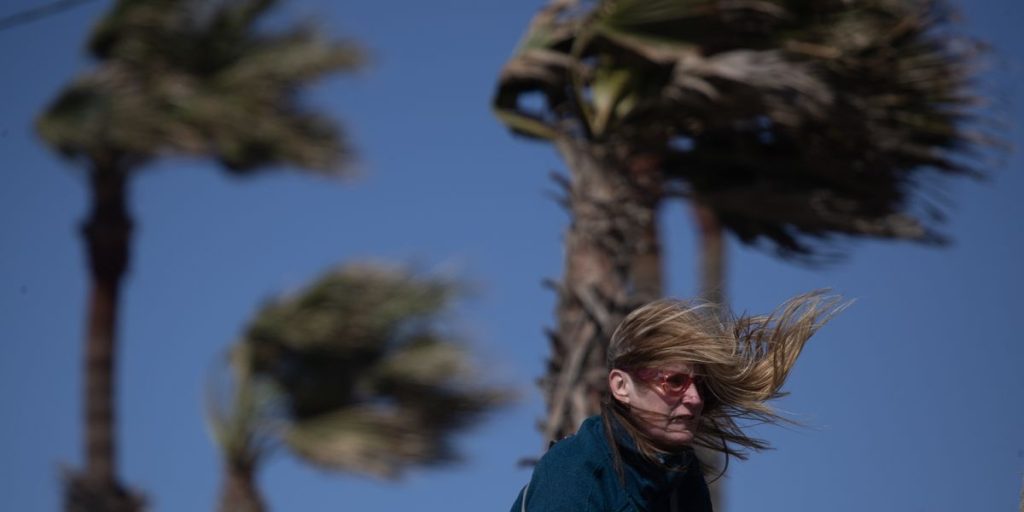
The first breath of spring can make us feel that all is right with the world. But when it comes as eerily warm temperatures in the 80s in February amid weather whiplash doled out by our overheated planet—not so much. It feels wrong because it is wrong. Welcome to the new abnormal.
This week sees a “meteorological battleground” setting up across the continental U.S., pitting a massive winter storm from the West against far-too-early Spring heat in the East. This major winter storm is dumping heavy snow and ice across the northern U.S. from the West Coast to the Northeast. Widespread very strong, gusty winds are expected across the West and High Plains while heavy rain with the potential for flash floods and severe weather are predicted for the Midwest and Plains. Meanwhile, historic heat is building across the Southeast and mid-Atlantic states, with record-breaking February temperatures soaring into the 80s. Almost the entire country is experiencing some form of extreme weather this week.
We do not have to simply accept an ever-worsening torrent of tempestuous weather.
The connections with climate disruption are everywhere in our weather. Some of these links—to hotter weather, heavier downpours, strengthening hurricanes—are crystal clear. Rock-solid science has long told us that as the global average temperature increases, extreme heat will rise even faster. And because a warmer atmosphere holds more moisture, more of our precipitation is coming in the form of heavy downpours. Hurricanes get their energy from warm ocean water, becoming stronger and intensifying more rapidly as temperatures rise. More than 90% of the excess heat trapped by carbon pollution has been absorbed by the ocean, and the world’s oceans were the hottest ever recorded in 2022. Climate scientists have long warned of these changes and the predictions are now coming to pass.
Other links between extreme weather and human-caused climate change are more complex and are the subject of active research as we seek to pin down some of the specific mechanisms by which climate change is turning our weather world upside down. One area of intensive investigation is how an overheating world is affecting the winter jet stream. Mounting evidence suggests that Arctic warming is linked to winter cold snaps in the U.S., increasing their frequency and persistence.
The Arctic is heating up nearly four times as fast as the rest of the globe. This reduces the temperature difference between the equator and pole, increasing disruptions of the polar vortex—a swirl of cold air in the stratosphere that circles the North Pole—and favoring a wavier winter jet stream, which is the high-altitude wind current that creates and steers weather systems from west to east. A wavier jet stream tends to swing in larger north-south meanders and travel east more slowly, bringing more frequent and persistent cold plunges over the United States. A warming ocean may also be leading to more intense Nor’easters and coastal winter storms that bring large snowfalls and bitter cold snaps.
There is a very real risk that as climate disruption continues to exacerbate many types of extreme weather, that such unnatural disasters will become normalized, ceasing to raise the alarm that they should and failing to prod society to make the changes needed to prevent the climate crisis from worsening. Research suggests that people tend to normalize extreme weather over just two to eight years, gradually coming to accept a more hostile environment as just the way things are now. This is one reason we dislike hearing the phrase “new normal” attached to our increasingly wild weather. There is nothing normal about what’s happening, just as there is nothing “natural” about the weather disasters we now experience.
Another reason we reject the phrase “new normal” is that it implies that we’ve reached a new steady state, when in fact things will continue to get worse until we eliminate heat-trapping pollution.
The good news is that clean energy and other climate solutions are abundant and available. Although there is much work that remains to be done, recent U.S. legislation makes it increasingly profitable to tap into natural flows of renewable energy, such as from the sun and the wind, and to use that clean electricity to power our buildings, transportation, and more. We do not have to simply accept an ever-worsening torrent of tempestuous weather. We can act with urgency to rein in the climate emergency and remake our civilization into one that respects the gift of a stable climate we inherited—one that we can pass on to our children.

